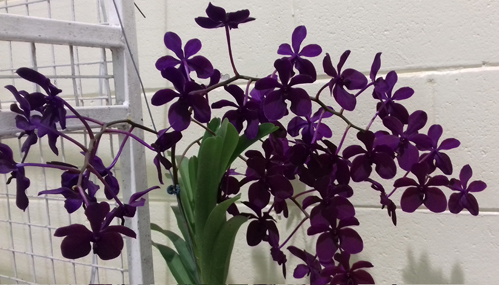Trinidad and Tobago Orchid Society
Cultural Corner: Watering
Without question, more orchids are killed by incorrect watering than by any other reason. Proper watering consists of two separate components; quantity and frequency. Orchids should be watered just as they dry out. There's unfortunately no magic formula; i.e., water a plant in a 6" pot every 7 days and you'll be trouble free. This  is because your growing area is different from anyone else's. Humidity, air movement, potting medium (type and age) and light levels all play a role. There are several ways to determine when a potted orchid is almost dry: 1) the surface of the potting mix will appear dry; 2) dry pots will feel lighter; 3) clay pots feel dry; 4) a wooden stake or skewer inserted into the potting mix will come out almost dry (Figure 2). If in doubt, a finger inserted into the potting mix is perhaps the best tool to determine the moisture content of the potting mix. It will cause no harm to the plant.
is because your growing area is different from anyone else's. Humidity, air movement, potting medium (type and age) and light levels all play a role. There are several ways to determine when a potted orchid is almost dry: 1) the surface of the potting mix will appear dry; 2) dry pots will feel lighter; 3) clay pots feel dry; 4) a wooden stake or skewer inserted into the potting mix will come out almost dry (Figure 2). If in doubt, a finger inserted into the potting mix is perhaps the best tool to determine the moisture content of the potting mix. It will cause no harm to the plant.
When orchids are watered, they should be watered copiously. Water should be provided until it runs freely from the drainage holes. Not only does this soak the potting medium but it also flushes salts that naturally accumulate. At a minimum, try to thoroughly water your plants at least once a month.
Watering frequency can be controlled by the choice of pot. For those who really like to water their plants or live in humid, rainy areas, clay pots, especially slotted pots are a good choice. Growers in drier climates or those who tend not to water often enough might want to use plastic pots to hold moisture longer.
